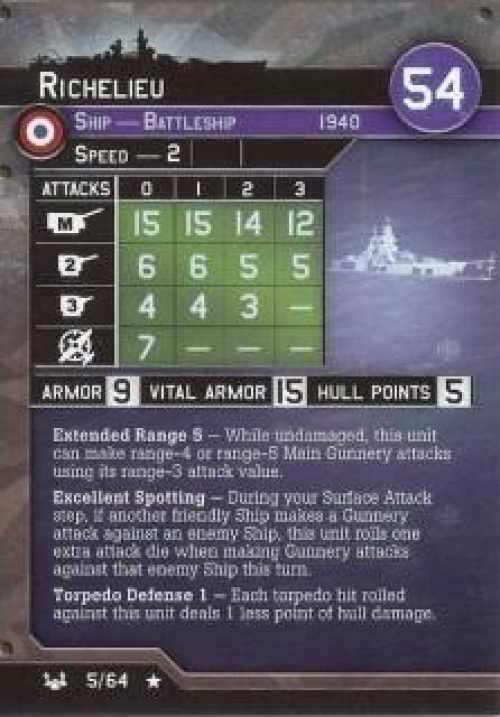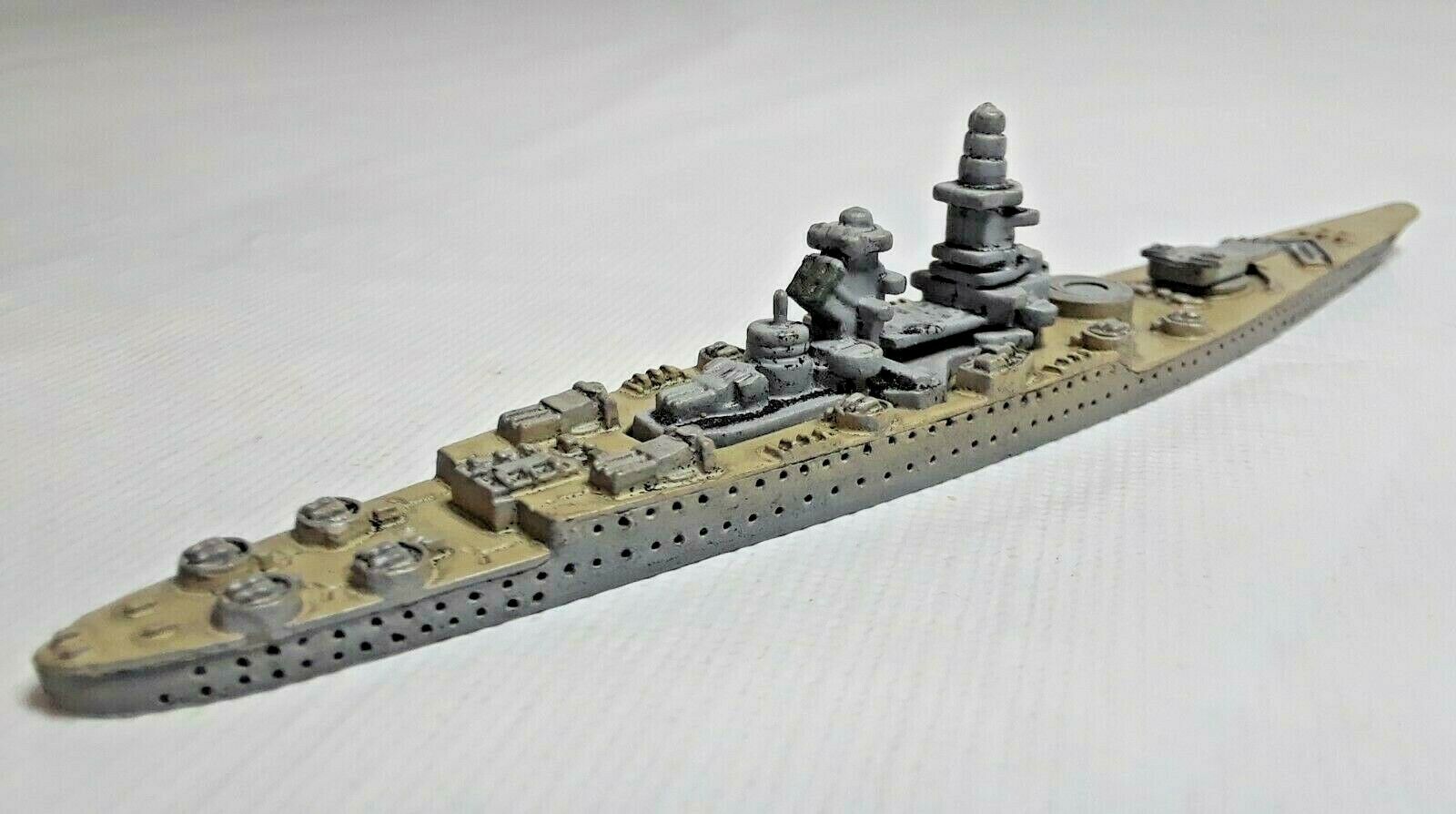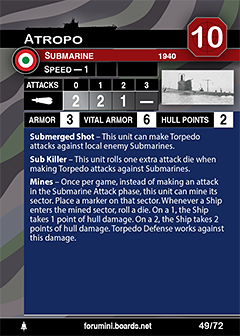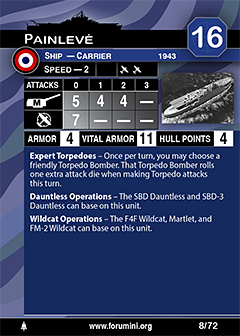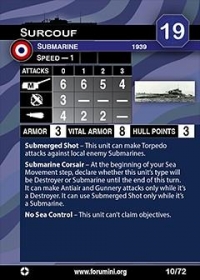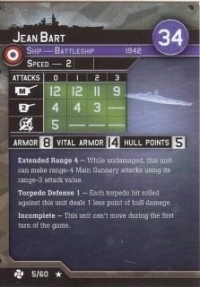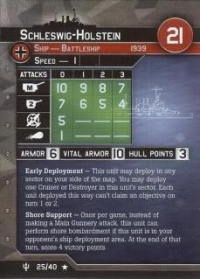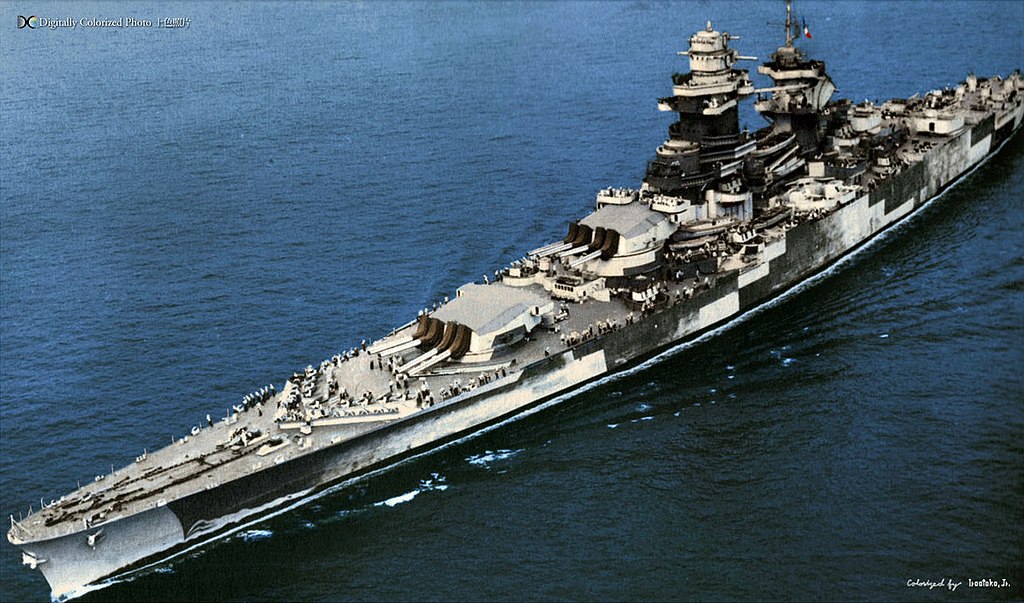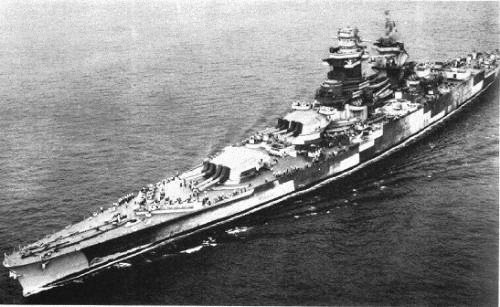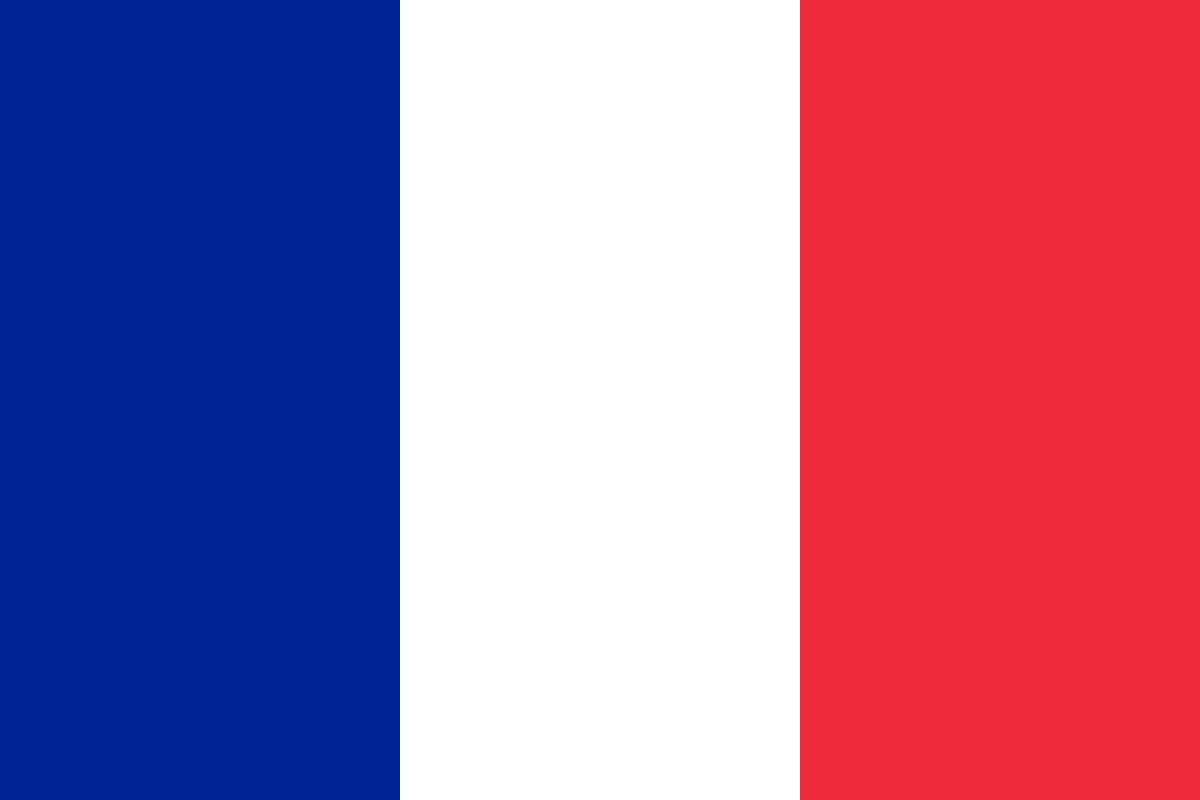Prototype: Richelieu was a French fast battleship, the lead ship of the Richelieu class. Built as a response to the Italian Littorio class, the Richelieus were based on their immediate predecessors of the Dunkerque class with the same unconventional arrangement that grouped their main battery forward in two quadruple gun turrets. They were scaled up to accommodate a much more powerful main battery of eight 380 mm (15 in) guns (compared to the 330 mm (13 in) guns of the Dunkerques), with increased armor to protect them from guns of the same caliber. Richelieu was laid down in 1935 and was launched in 1939, just before the outbreak of World War II in Europe. As war with Germany became increasingly likely, work on the ship was rushed to prepare her for commissioning in April 1940.
Completed just days before the Germans won the Battle of France in June, Richelieu fled to Dakar in French West Africa to keep her under French control. There, she came under repeated British attacks that had been intended to either compel the battleship to join the Free French Naval Forces or sink her; these included during Operation Catapult in July 1940 and the Battle of Dakar in September. Damaged in both attacks, the ship was slowly repaired before eventually turning over to Free French control after the Allied invasion of North Africa in November 1942. After being sent to the United States for repairs and an extensive modernization, the ship served with the British Home Fleet in early 1944 before being deployed to the Eastern Fleet for operations against the Japanese in the Indian Ocean. These included several bombardment operations and in May 1945 she was present during the Battle of the Malacca Strait, though she was too far away to engage the Japanese ships before they were sunk.
Richelieu was part of the force that liberated Singapore following the Japanese surrender in September, and she thereafter operated in French Indochina as part of the initial effort to restore French colonial rule. Recalled to France in December 1945, she was repaired and modernized slightly in 1946. The ship saw relatively limited peacetime training in the immediate postwar years and in 1952, she was removed from active service for use as a gunnery training ship. In 1956, she was placed in reserve and was thereafter used as a stationary training vessel and barracks ship until 1967, when the French Navy decided to discard her. Sold for scrap in 1968, she was broken up in Italy from 1968 to 1969.
Completed just days before the Germans won the Battle of France in June, Richelieu fled to Dakar in French West Africa to keep her under French control. There, she came under repeated British attacks that had been intended to either compel the battleship to join the Free French Naval Forces or sink her; these included during Operation Catapult in July 1940 and the Battle of Dakar in September. Damaged in both attacks, the ship was slowly repaired before eventually turning over to Free French control after the Allied invasion of North Africa in November 1942. After being sent to the United States for repairs and an extensive modernization, the ship served with the British Home Fleet in early 1944 before being deployed to the Eastern Fleet for operations against the Japanese in the Indian Ocean. These included several bombardment operations and in May 1945 she was present during the Battle of the Malacca Strait, though she was too far away to engage the Japanese ships before they were sunk.
Richelieu was part of the force that liberated Singapore following the Japanese surrender in September, and she thereafter operated in French Indochina as part of the initial effort to restore French colonial rule. Recalled to France in December 1945, she was repaired and modernized slightly in 1946. The ship saw relatively limited peacetime training in the immediate postwar years and in 1952, she was removed from active service for use as a gunnery training ship. In 1956, she was placed in reserve and was thereafter used as a stationary training vessel and barracks ship until 1967, when the French Navy decided to discard her. Sold for scrap in 1968, she was broken up in Italy from 1968 to 1969.
Class History: The Richelieu-class battleships were the last and largest battleships of the French Navy. They left service in the 1960s. They remain the largest French-built warships. They were designed in the 1930s to counter the threat of the Italian Vittorio Veneto-class battleships. Richelieu-class ships were essentially scaled-up versions of the preceding Dunkerque class. They featured a main battery of eight 380 mm (15.0 in) guns in two quadruple turrets in forward superfiring positions.
Four Richelieu-class ships, of three different subclasses, were designed over the course of three construction programs, in 1935, 1936, and 1938. Only three were laid down. Only the first two, Richelieu and Jean Bart, were completed. They saw service during World War II, first under Vichy control in Dakar (1940) and Casablanca (1942), then under Allied control. Richelieu participated in British Home Fleet and Eastern Fleet operations and supported French forces' return to Indochina in late 1945. Jean Bart was not completed until the 1950s and took part in the operations off Port Said (Egypt) during the Suez Crisis in 1956. Richelieu was scrapped in 1968 and Jean Bart in 1970.
Four Richelieu-class ships, of three different subclasses, were designed over the course of three construction programs, in 1935, 1936, and 1938. Only three were laid down. Only the first two, Richelieu and Jean Bart, were completed. They saw service during World War II, first under Vichy control in Dakar (1940) and Casablanca (1942), then under Allied control. Richelieu participated in British Home Fleet and Eastern Fleet operations and supported French forces' return to Indochina in late 1945. Jean Bart was not completed until the 1950s and took part in the operations off Port Said (Egypt) during the Suez Crisis in 1956. Richelieu was scrapped in 1968 and Jean Bart in 1970.
Country: France is one of Europe’s largest countries. It is bordered by six countries other nations: Germany, Belgium and Luxembourg to the northeast, Switzerland and Italy to the southeast and Spain to the southwest. The United Kingdom borders France via the English Channel. The country is considered to be the gateway to Europe as there are several large international airports (two of these can be found in Paris), ferry terminals and the French rail service.
In 486, Frankish tribes unified under Merovingian kingship. In 843, Western Francia was established from the division of the Carolingian Empire. In 1789, the French monarchy was overthrown, and in 1792, the First French Republic was founded. In 1958, the Fifth French Republic was established.
In 486, Frankish tribes unified under Merovingian kingship. In 843, Western Francia was established from the division of the Carolingian Empire. In 1789, the French monarchy was overthrown, and in 1792, the First French Republic was founded. In 1958, the Fifth French Republic was established.
Item created by: Lethe on 2015-05-31 17:46:30. Last edited by gdm on 2019-11-20 12:21:00
If you see errors or missing data in this entry, please feel free to log in and edit it. Anyone with a Gmail account can log in instantly.
If you see errors or missing data in this entry, please feel free to log in and edit it. Anyone with a Gmail account can log in instantly.


